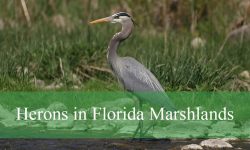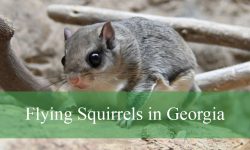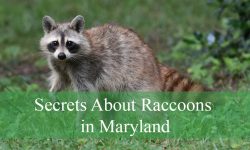Colorado is home to a wide variety of wildlife, and deer are among the most iconic and commonly observed animals in the state. With expansive grasslands, dense forests, alpine meadows, and mountainous terrain, Colorado provides an ideal environment for several distinct deer species to thrive. Each species brings unique characteristics, behaviors, and adaptations that make them fascinating to observe in their natural settings.
Identifying deer in the wild can be a rewarding experience, especially when you understand the key features that set each species apart. From ear shape and antler structure to coloration and movement patterns, these traits offer helpful clues for accurate identification. Understanding their habits and preferred habitats also increases the chances of encountering them during hikes, camping trips, or scenic drives across Colorado.
This article provides a detailed look at five types of deer found in Colorado, along with identification tips and habitat insights. With the help of photos and descriptions, readers will gain a deeper appreciation for these magnificent animals and the diverse ecosystems they inhabit.
Different Types of Deer in Colorado
Mule Deer (Odocoileus hemionus)
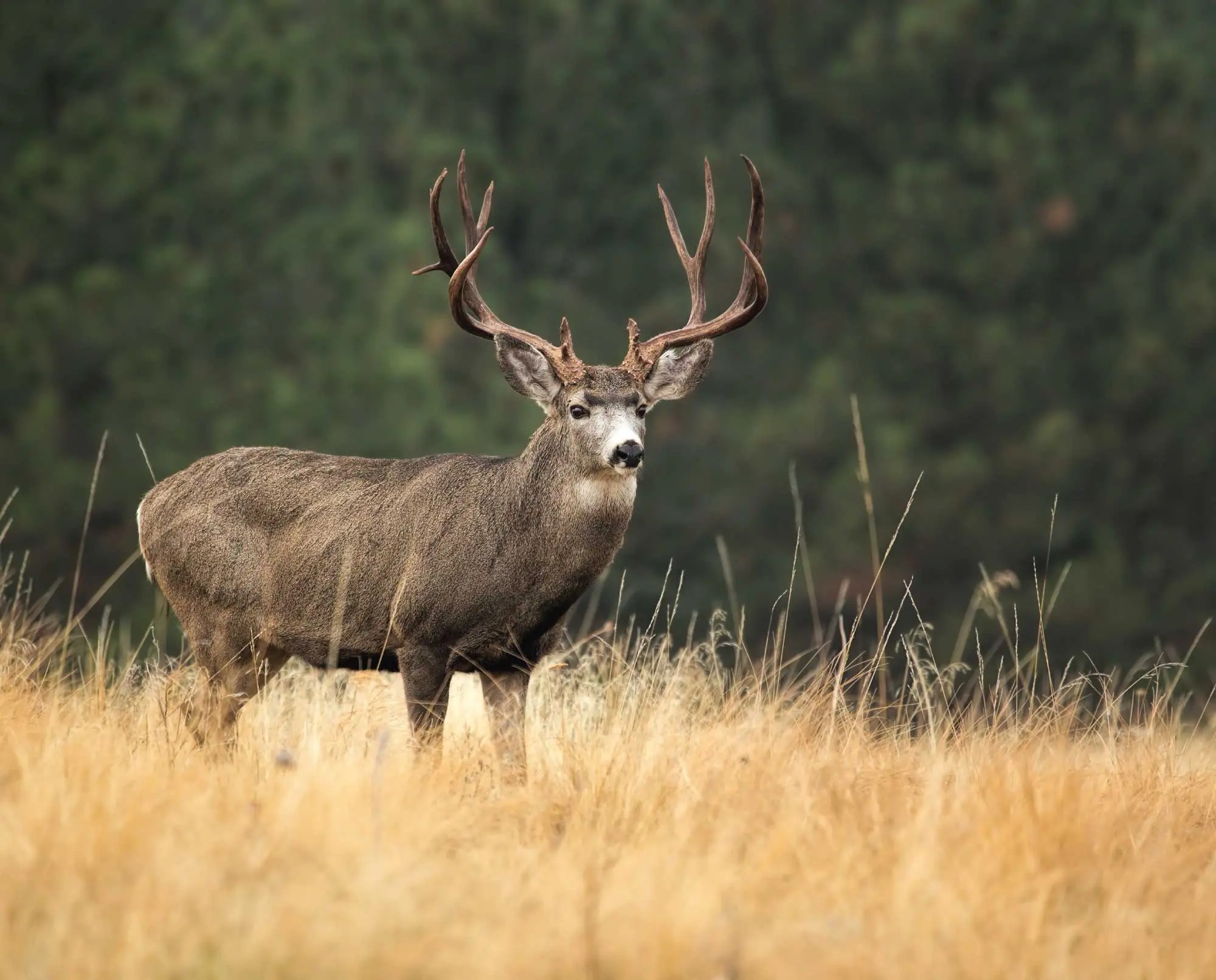
Mule deer are the most iconic and widespread deer species in Colorado. They are easily recognized by their large, mule-like ears, which move independently and help them detect predators from afar. Mule deer are medium to large in size, with adult males (bucks) weighing between 150–300 pounds, and females (does) averaging 100–200 pounds. Their coat changes with the seasons, appearing reddish-brown in summer and grayish in winter. One of the most distinctive features is their black-tipped tail and a white rump patch. Unlike white-tailed deer, mule deer have bifurcated antlers that fork evenly as they grow.
Mule deer are crepuscular, meaning they are most active during dawn and dusk. They are cautious animals and typically move in small groups, especially during winter when they form larger herds. Bucks are solitary for most of the year except during the rut (breeding season) in late fall, when they compete for access to does. During the rut, males engage in sparring matches using their antlers and may follow females closely. Mule deer have an excellent sense of smell and hearing, and they rely heavily on these senses to detect danger. When alarmed, they may perform a unique “stotting” behavior—bounding on all four legs with high jumps to escape predators.
In Colorado, mule deer inhabit a wide range of environments, including foothills, sagebrush flats, piñon-juniper woodlands, and alpine meadows. They are especially common in the western and mountainous regions of the state. Mule deer often migrate seasonally, moving to lower elevations in winter to escape deep snow and returning to higher elevations in summer to find food and raise their young. Habitat fragmentation and vehicle collisions are among the main threats to mule deer populations, but they are still considered stable across most of Colorado.
White-tailed Deer (Odocoileus virginianus)
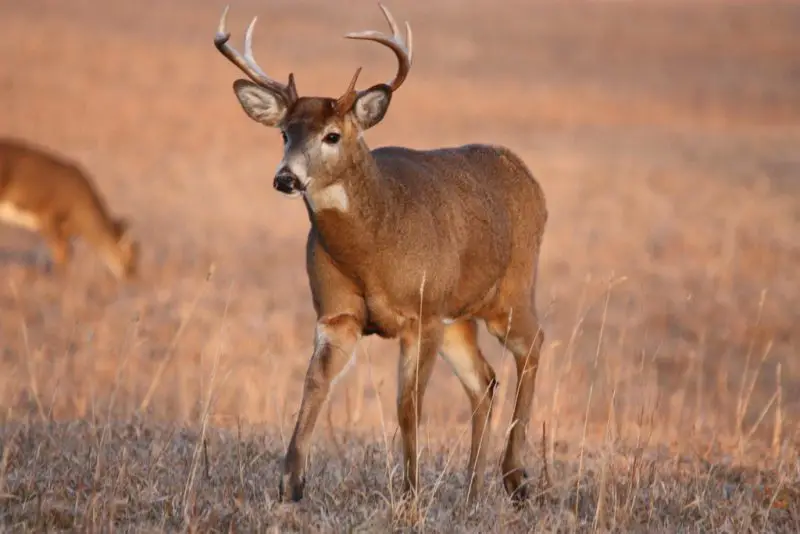
White-tailed deer are less common than mule deer in Colorado but are found in specific regions, particularly in the eastern plains, riparian zones, and agricultural fields along rivers and creeks. They are slightly smaller than mule deer, with adult bucks averaging 130–250 pounds and does weighing 90–160 pounds. Their coat is reddish-brown in summer and grayish-brown in winter. The most notable identification feature is their large, bushy tail that is white on the underside, which they raise like a flag when fleeing—a clear signal to others in the herd.
Unlike mule deer, white-tailed deer have antlers that typically grow upward with a single main beam and tines (points) branching from it, rather than the forked antlers of mule deer. Their ears are also proportionately smaller. Behaviorally, white-tailed deer are more secretive and often remain in denser cover. They are excellent jumpers and swimmers and can adapt to various environments. During the rut in November, bucks mark their territory with scrapes and rubs, and they engage in aggressive behavior to assert dominance and attract females. They communicate using scent glands, vocalizations like snorts and grunts, and tail signals.
In Colorado, white-tailed deer are mostly found in lowland areas, particularly along the South Platte and Arkansas Rivers. They thrive in riparian woodlands, farmland, and suburban areas where cover and food are abundant. They are more likely to be found near water sources and are known to frequent edges of fields and forests. While they are more abundant in states to the east, their range in Colorado has been expanding. Wildlife management and regulated hunting help maintain a healthy population in suitable habitats throughout the state.
Rocky Mountain Elk (Cervus canadensis nelsoni)
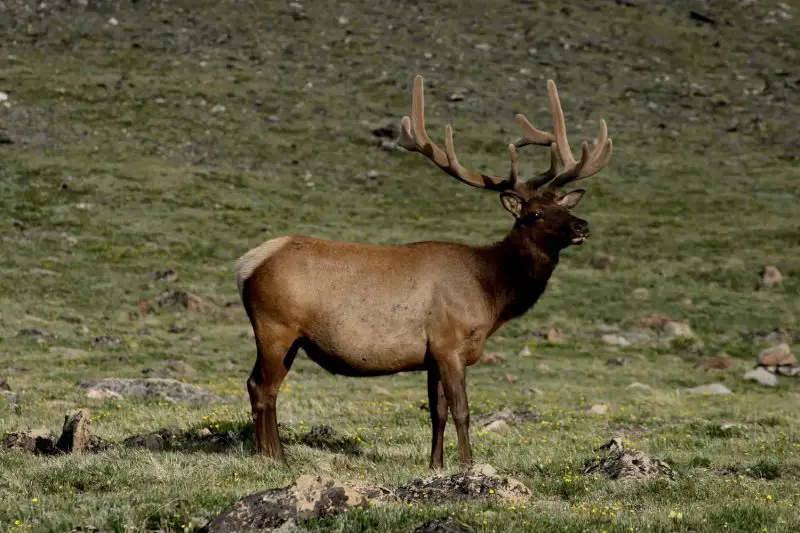
The Rocky Mountain elk is one of the largest members of the deer family and is commonly found across Colorado’s mountainous landscapes. Adult bulls can weigh between 600 and 1,000 pounds, while cows are significantly smaller, averaging 450 to 600 pounds. They have a reddish-brown body with a lighter-colored rump and dark brown neck and legs. Mature bulls are easily recognized by their massive antlers, which can span over four feet across and are shed and regrown annually. Elk also produce a distinctive high-pitched bugle call, especially during the fall rut, which serves to attract females and warn off rival males.
Elk are highly social animals and typically live in herds. Cows, calves, and yearlings form groups led by a dominant female, while bulls often live alone or in bachelor groups outside of the breeding season. During the rut, dominant bulls gather and defend harems of cows, using their bugle calls and antlers to challenge competitors. Calves are born in early summer and are hidden in tall grasses or underbrush to protect them from predators. Elk are primarily grazers, feeding on grasses, forbs, and shrubs, although they will browse on tree bark and twigs during winter.
In Colorado, elk are most abundant in areas like Rocky Mountain National Park, the Flat Tops, San Juan Mountains, and the White River National Forest. They migrate between summer and winter ranges, often moving to lower elevations in winter to avoid heavy snow. Elk are highly adaptable and can live in forests, meadows, alpine tundra, and even near suburban areas where food and space allow. Colorado boasts the largest elk population in North America, and they are a major attraction for wildlife enthusiasts, photographers, and hunters.
Moose (Alces alces)
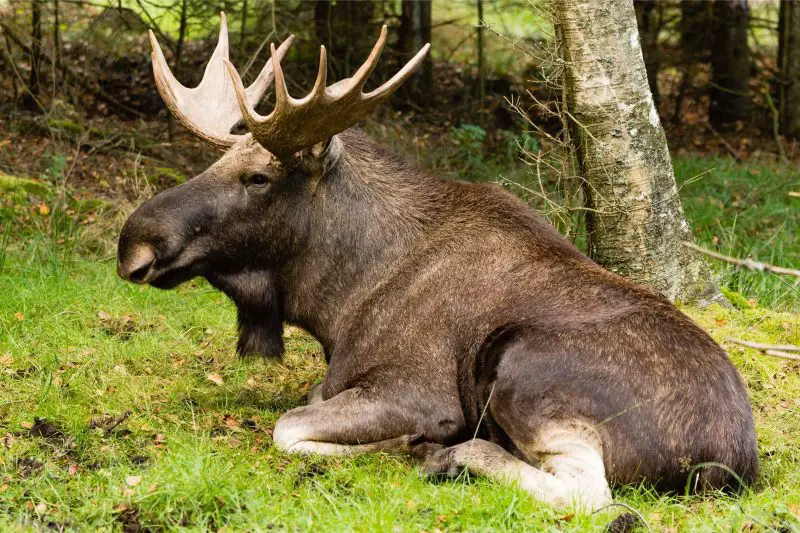
Moose are the largest members of the deer family and are a relatively recent addition to Colorado’s wildlife. They were introduced in the 1970s in North Park and have since spread to other parts of the state, particularly in the north-central and northwest regions. Adult bulls can weigh between 1,000 and 1,400 pounds, while cows range from 800 to 1,200 pounds. Moose have long legs, a humped shoulder, and a distinctive overhanging nose. Bulls grow large, palmate (broad and flattened) antlers that can span over five feet. Their coats are dark brown to black, and they have a dewlap, or “bell,” hanging from the throat.
Moose are mostly solitary animals, except for brief periods during the rut and when females are raising calves. They are known for their calm demeanor but can become aggressive if threatened, especially during mating season or when protecting young. Mating occurs in the fall, and calves are born in late spring. Despite their size, moose are surprisingly good swimmers and are often found feeding in aquatic environments where they browse on willows, aspens, aquatic plants, and shrubs. They feed heavily in the morning and evening, and due to their solitary nature, they tend to be quiet and elusive in the wild.
Moose in Colorado prefer wet, forested habitats such as river valleys, willow thickets, and subalpine forests. They are most often seen near lakes, ponds, and streams, particularly in places like State Forest State Park, Grand County, and the Routt National Forest. The establishment of moose populations has been largely successful, and their numbers continue to grow. Though not native to Colorado, they are now considered a part of the state’s thriving wildlife and are commonly viewed by nature lovers and photographers, especially in areas with thick willow growth near water.
Reindeer/Caribou (Rangifer tarandus) – Captive Only
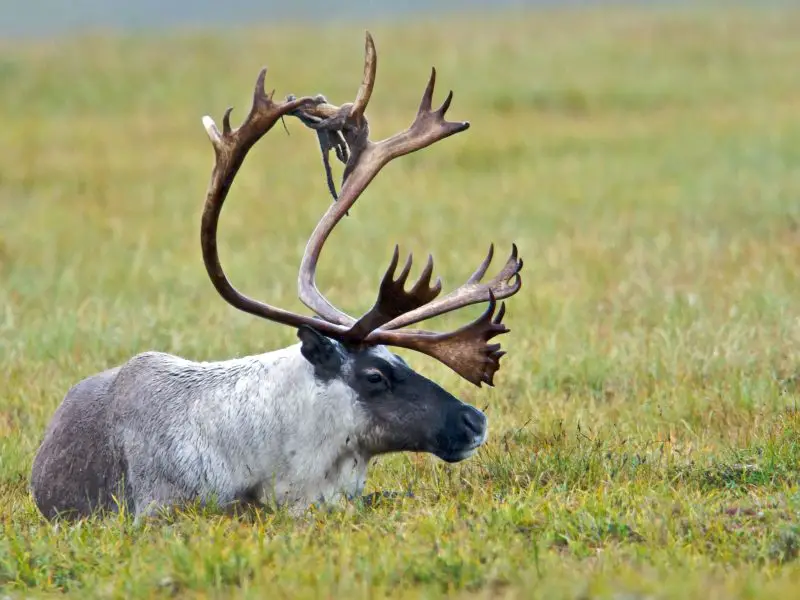
Reindeer, also referred to as caribou in North America, are medium-sized deer distinguished by their impressive antlers and dense, insulating coats. Unlike most deer species, both males and females grow antlers, though males typically have larger and more complex racks. Their fur varies in color from deep brown to silvery gray and becomes especially thick during colder months. They usually feature a white neck, chest, and underbelly, which contrasts with their darker back and sides, giving them a striking appearance that helps with cold-weather camouflage.
In their native northern habitats, reindeer are highly social and form large migratory herds that can number in the thousands. Their behavior is deeply tied to seasonal changes, with long migrations often occurring in search of food and suitable breeding grounds. Reindeer are well adapted to cold climates and are known for feeding on lichens, especially a variety known as “reindeer moss,” during harsh winters when other vegetation is scarce. Their wide, concave hooves also help them traverse snowy or marshy terrain with ease, and they use them to dig through snow to find food.
While reindeer once roamed parts of North America as caribou, they are not native to Colorado and do not exist in wild populations within the state. Any sightings of reindeer in Colorado are limited to captive settings such as wildlife parks, educational facilities, or private ranches that keep them for seasonal events or tourism purposes. These environments often simulate colder conditions and provide appropriate diets to meet their needs, but reindeer remain rare and closely managed in Colorado. Visitors interested in seeing them must seek out specific facilities, as they are not part of the state’s natural deer population.
Conclusion
Deer are an integral part of Colorado’s natural beauty and ecological balance. Each species contributes to the richness of the landscape, adapting to different environments from mountainous slopes to grassy lowlands. Recognizing the differences in their appearance, behavior, and seasonal movements adds another layer of understanding to wildlife observation and nature exploration in the region.
Spending time in Colorado’s great outdoors often brings unexpected and memorable encounters with these graceful animals. The more knowledge one has about each species, the more meaningful and respectful those encounters become. Awareness also plays a role in conservation, helping to protect both the deer and the habitats they depend on.
Learning about the five types of deer in Colorado not only enhances the outdoor experience but also fosters a deeper connection with the state’s wildlife heritage. With careful observation and patience, these magnificent creatures can be seen and appreciated in their natural splendor across many parts of Colorado.

